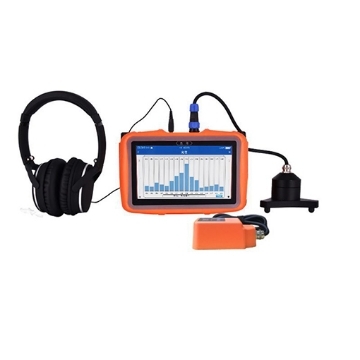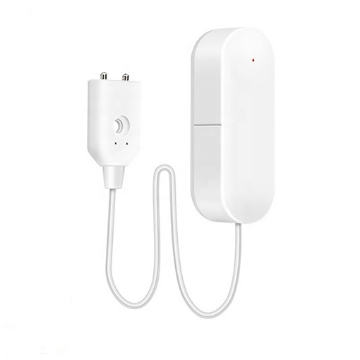Water leak detectors are essential devices designed to safeguard your home or business by providing early warnings when unexpected water or moisture is detected. In this blog post, we will delve into the working principles of these detectors to help you understand how they operate and why they are crucial in preventing water damage.
Here’s how water leak detectors with different sensors work.

Contact Sensors
Contact sensors work on the principle of completing an electrical circuit. They consist of two conductive probes or pads positioned in proximity to each other. When water bridges the gap between these probes, it acts as a conductor, effectively closing the electrical circuit. This change in conductivity is instantly detected by the sensor, which typically triggers an alarm, sending a signal to alert you to the presence of water. These sensors are straightforward and are often used in areas where water accumulation is expected, like in basement floors or under appliances.
Spot Sensors
Spot sensors are designed to detect moisture at a specific location. They use moisture-sensitive elements such as conductive traces, humidity sensors, or capacitive elements. When moisture or water droplets come into contact with these elements, they alter their electrical properties. This change in electrical resistance or capacitance is registered by the sensor. The sensor then sends a signal to activate an alarm or control unit, indicating the presence of water. Spot sensors are commonly used in appliances like washing machines and dishwashers.
Float Switches
Float switches operate on the buoyancy principle. They consist of a buoyant float mechanism tethered to a fixed point. When water levels rise, the float also rises with the water level. As the float moves upward, it lifts a switch or triggers a switch mechanism. This movement of the switch is then interpreted as a signal. The switch's activation can either trigger an alarm or control the operation of a pump or valve, allowing it to manage water levels. Float switches are often used in sump pumps, where water levels can fluctuate.
Optical Sensors
Optical water leak detectors rely on changes in light patterns. These sensors emit either infrared or visible light. When water comes into contact with the sensor, it scatters or absorbs the emitted light. The sensor constantly monitors the received light patterns. Any alterations in the light patterns, caused by the presence of water, are recognized by the sensor. This change in the detected light pattern is used as a trigger for an alarm, indicating the presence of water.
Acoustic Sensors
Acoustic water leak detectors are designed to detect water by listening for sound. When water droplets or flows occur, they emit specific acoustic signals or sound waves. The sensor is sensitive to these acoustic signals and uses them to identify the presence of water. By analyzing the pattern and intensity of these sounds, the sensor determines the likelihood of a water leak. Once it detects water-related sounds, it activates an alarm to alert you to the issue. Acoustic sensors are especially useful in scenarios where visual detection may be difficult, such as behind walls or under floors.
Moisture Absorption Sensors
Moisture absorption sensors often use materials that exhibit changes in their electrical properties when they absorb moisture. For example, these materials might have varying electrical resistance or capacitance when dry compared to when they are wet. The sensor constantly monitors these electrical properties. When the material absorbs moisture and reaches a specific threshold, indicating the presence of water, the sensor triggers an alarm to notify you of the issue. These sensors are commonly integrated into various devices to detect moisture and leaks, including some building materials and appliances.
Wireless Technology: Many modern water leak detectors are equipped with wireless capabilities, such as Wifi Water Leak Detector. They can communicate with a central control unit or your smartphone, sending real-time alerts when a leak is detected. This feature ensures that you can respond promptly to minimize potential damage.

Integration with Smart Home Systems: Advanced water leak detectors can be integrated into smart home systems. They can communicate with other devices and automation features. For example, they can automatically shut off the water supply when a leak is detected or send notifications to your smartphone, even when you're away from home.
Water leak detectors operate on various principles, depending on the type and application. These devices play a critical role in preventing water damage, which can be both costly and destructive.

